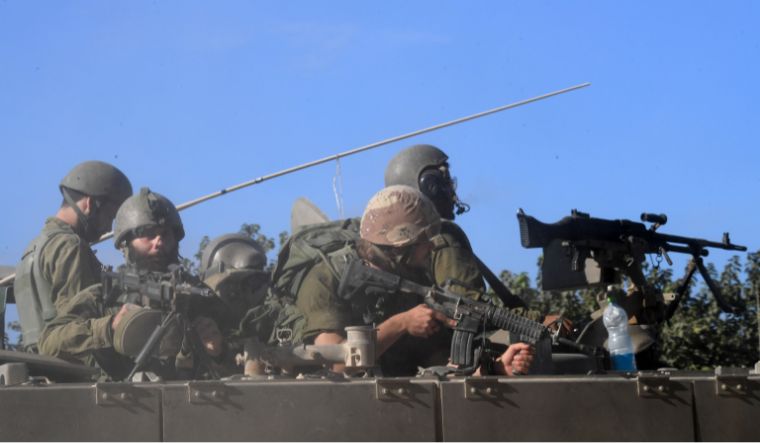On the 11th day of its ground assault in the Gaza Strip, the Israeli Defense Forces (IDF) lost its 34th soldier on Monday even as a top Hamas special operations fighter Jamal Musa was killed in an Israeli airstrike overnight with IDF aircraft continuing to incessantly bombard Hamas strongholds.
The IDF said in a statement on Monday: “As part of operations to eliminate the terrorists of the terrorist organization Hamas, IDF fighter jets under the intelligence guidance of the Amman and the Shin Bet killed additional commanders of Hamas among them - Jamal Musa, who is responsible for special security in the terrorist organization Hamas.”
Also read: Murad Abu Murad: Hamas aerial operations chief killed in overnight strikes, says Israel
Following conventional military tactics, the IDF effort has been pounding Hamas strongholds, infrastructure and tunnel networks, isolate the militants in their power centre in Gaza City, cut it off from the south, and then move in to engage Hamas in close combat.
But even before the last phase of direct face-to-face combat with the Hamas is yet to properly begin, the IDF has lost 34 soldiers in 11 days—indicating the difficulties that lie ahead for the IDF troops in an urban turf that the Hamas has chosen.
At least 348 Israeli soldiers have lost their lives ever since Hamas militants broke through at least 30 points of the fortified fence that separated Gaza from Israel and killed about 1,400 Israelis on October 7.
Also read: Who was Asem Abu Rakaba? IDF claims head of Hamas aerial array killed in Israel airstrike
The threat of more fronts opening up, particularly with the Hezbollah having stepped up attacks from the West Bank and Lebanon, is ought to be dispelled by heavy US naval presence in the region.
On Sunday, the Pentagon published a picture of a nuclear-capable Ohio-class submarine in the Suez Canal in addition to the picture of a nuclear-capable B-1 bomber purported to be operating in the region.
It is rare for the US to release pictures of strategic assets like nuclear submarines and to notify their positions because of their deterrence value. It is difficult to detect locations of nuclear submarines which can stay underwater for months without the need to surface.
Two US aircraft carriers – USS Gerald R. Ford and USS Dwight D. Eisenhower – have already been deployed to the region which is seen as a warning to Iran and its proxy outfits not to get embroiled in the ongoing conflict.
Besides an armada of supporting naval vessels including destroyers, frigates and submarines, the two aircraft carriers between them can carry more than 135 fighter aircraft including F-18s.



